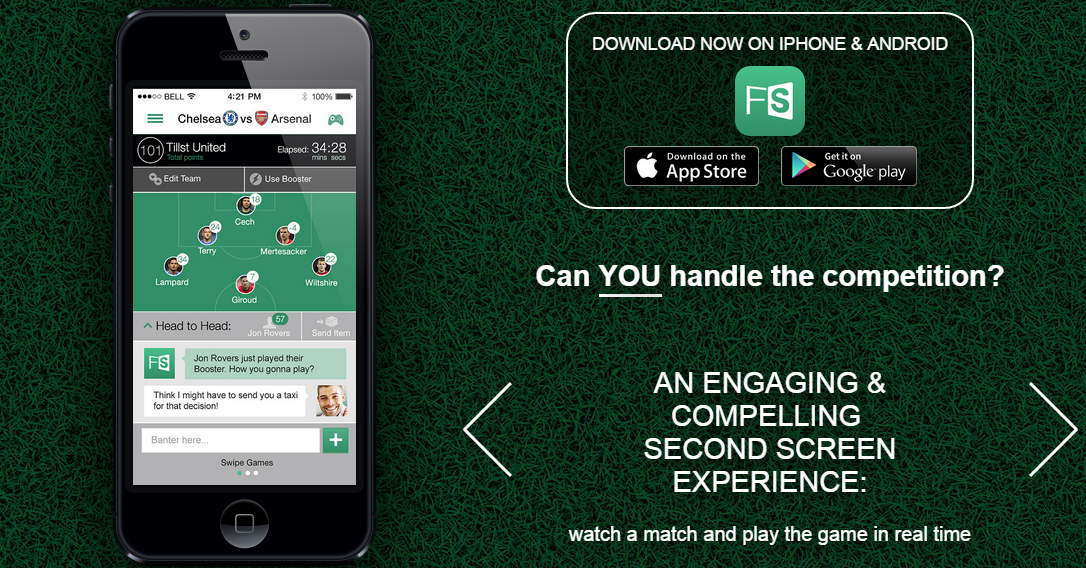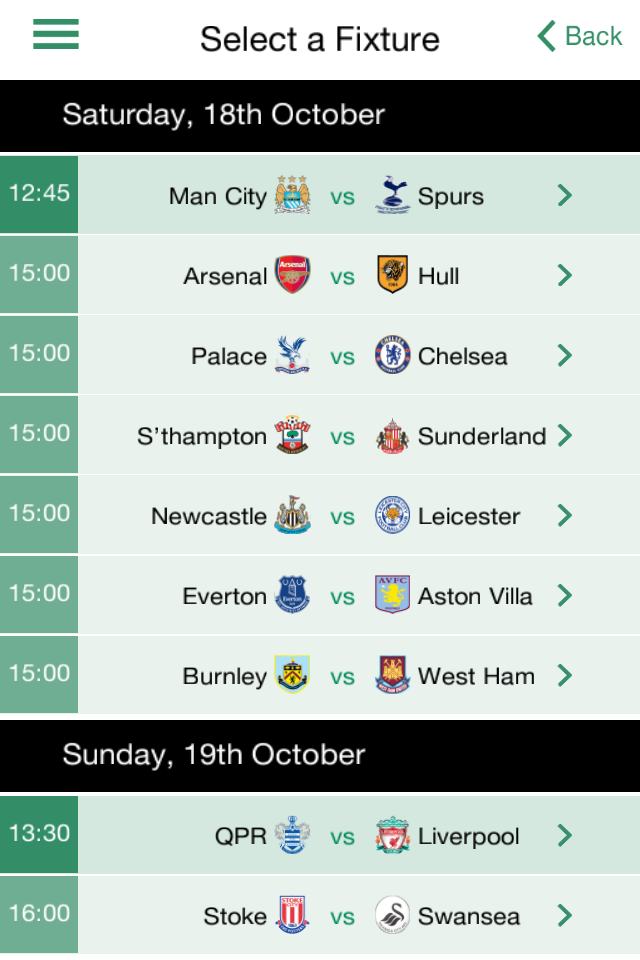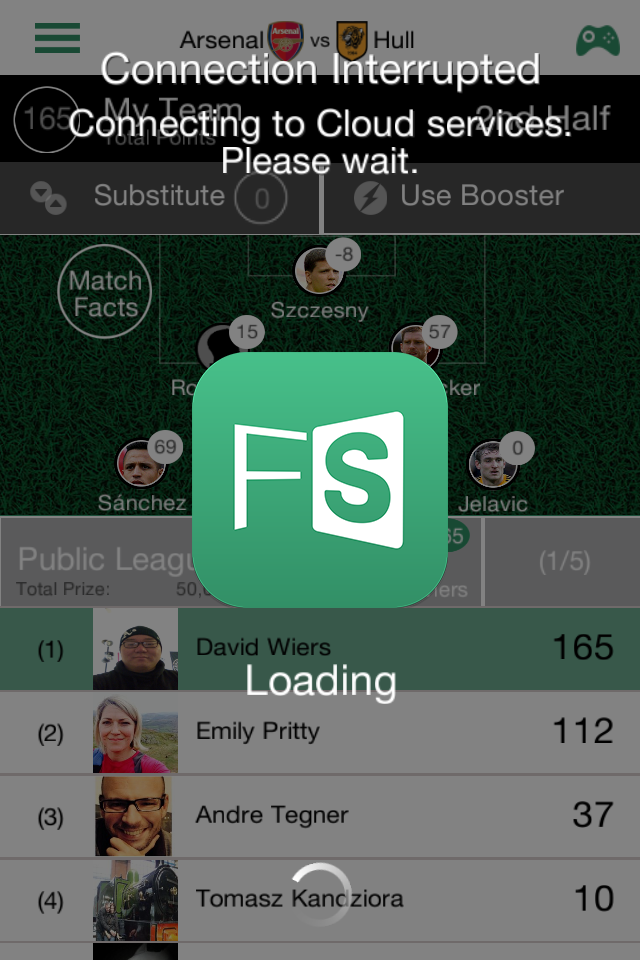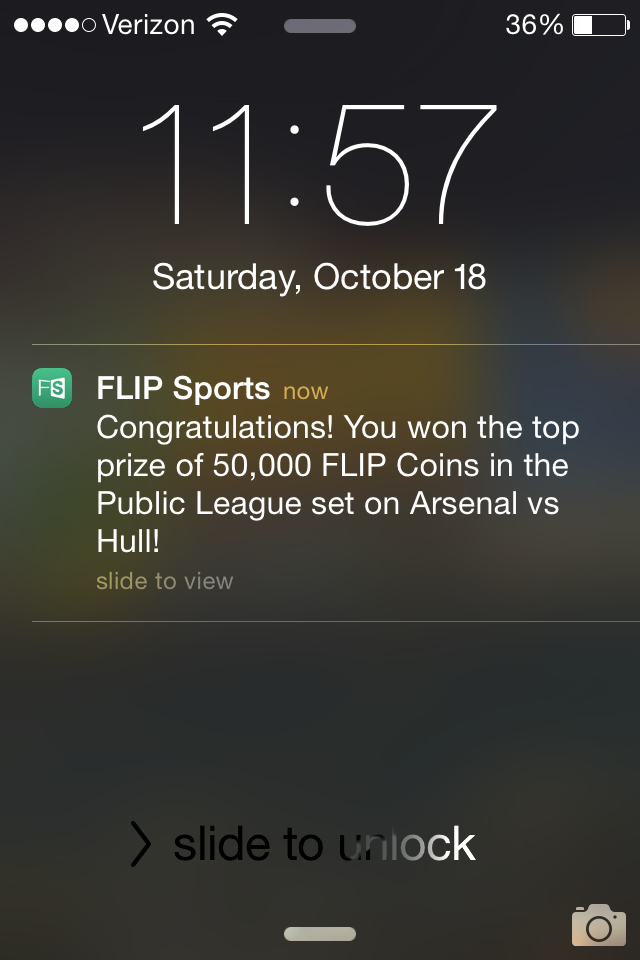Review: FLIP Sports App
In addition to standard fantasy football — err, actually soccer — options such as Yahoo!, ESPN and the like, FLIP Sports offers a brand new way for Android and iOS users to participate in the biggest sport in the world. FLIP (Fantasy League In-Play) Sports doesn’t require any initial signup fees, league dues or even a multi-hour draft process to select your team. The premise of the app is to use it as a “an engaging & compelling second screen experience.”
If FLIP Sports aimed to make fantasy football/soccer easier, then it certainly succeeded. It helps to have a working knowledge of clubs and rosters, but the app is easy to navigate. After the initial download, just pick what fixture you want to play in.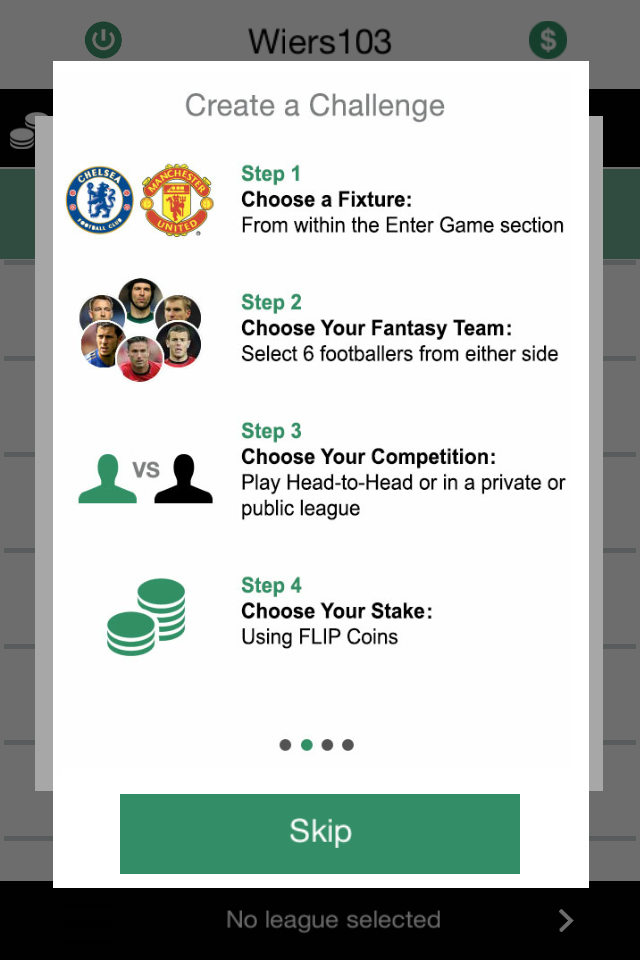
Once you’ve nailed down which teams you’ll be using, it’s time to pick your lineup. I chose my team late Friday, prior to the real-life lineups being announced, so I gambled and got lucky. Unfortunately I could not tell if the app differentiates between who is in the lineup and who isn’t so I used the Forza widget to cross check lineups. There are certain options within the lineup as you can change the format from the default 2-2-1 formation to a more attacking 2-1-2 lineup. You’re also forced to choose players from both teams — a minimum of two from each club — so no stacking your lineup with all of one side. The match I picked was Arsenal vs. Hull City.
Now with a lineup in hand, it’s time to choose what type of competition you’ll be in. The app is fairly new and none of my friends had it yet, and thus private or head-to-head wasn’t an option. Off to the public league went my chosen lineup. Rather than real money, you wager FLIP Coins. It cost x many to join a public league, y for a head to head, etc. The more people playing, the bigger the pot grows, similar to poker.
As I was reading the rules, a rather annoying screen popped up several times. Despite being on Wi-Fi, the following screen was flashed on my device repeatedly. It’s still a new app, so I’m willing to bend on loading screens, but I do expect things to be cleaned up in the future.
Since one of the ideas of the app is real-time second screen viewing, the instant scoring updates on my lineup was quite nice. Everything from goals to defensive clearances to clean sheets for goalies accumulate points. Negative categories such as yellow and red cards and even things as simple as losing possession of the ball hurt you. Even with negative categories — something I’m not terribly keen on, but I understand the importance of — my team was winning the public league, at least through the first half!
The downside of being a new app shows again, as I was one of only five participants in this fixture. Presuming this app gains traction and popularity, the number of public league players will of course rise. Unfortunately, I was hit with yet another “connection interrupted” screen.
Even with the mild annoyances, I was victorious! I didn’t use the “booster” option, something that gives 2x the points for the chosen player for 10 minutes as I think it’s a bit cheesy to do so. The game stands on its own legs, no need for gimmicks.
Overall FLIP Sports is very fun, though there are some technical glitches to work through. I do hope more people join on as it’s a quick and easy way to root for players other than those on your favorite squad. It isn’t perfect for everything, but if you’re the competitive type looking for a free daily fantasy league, FLIP Sports is perfect for that.
